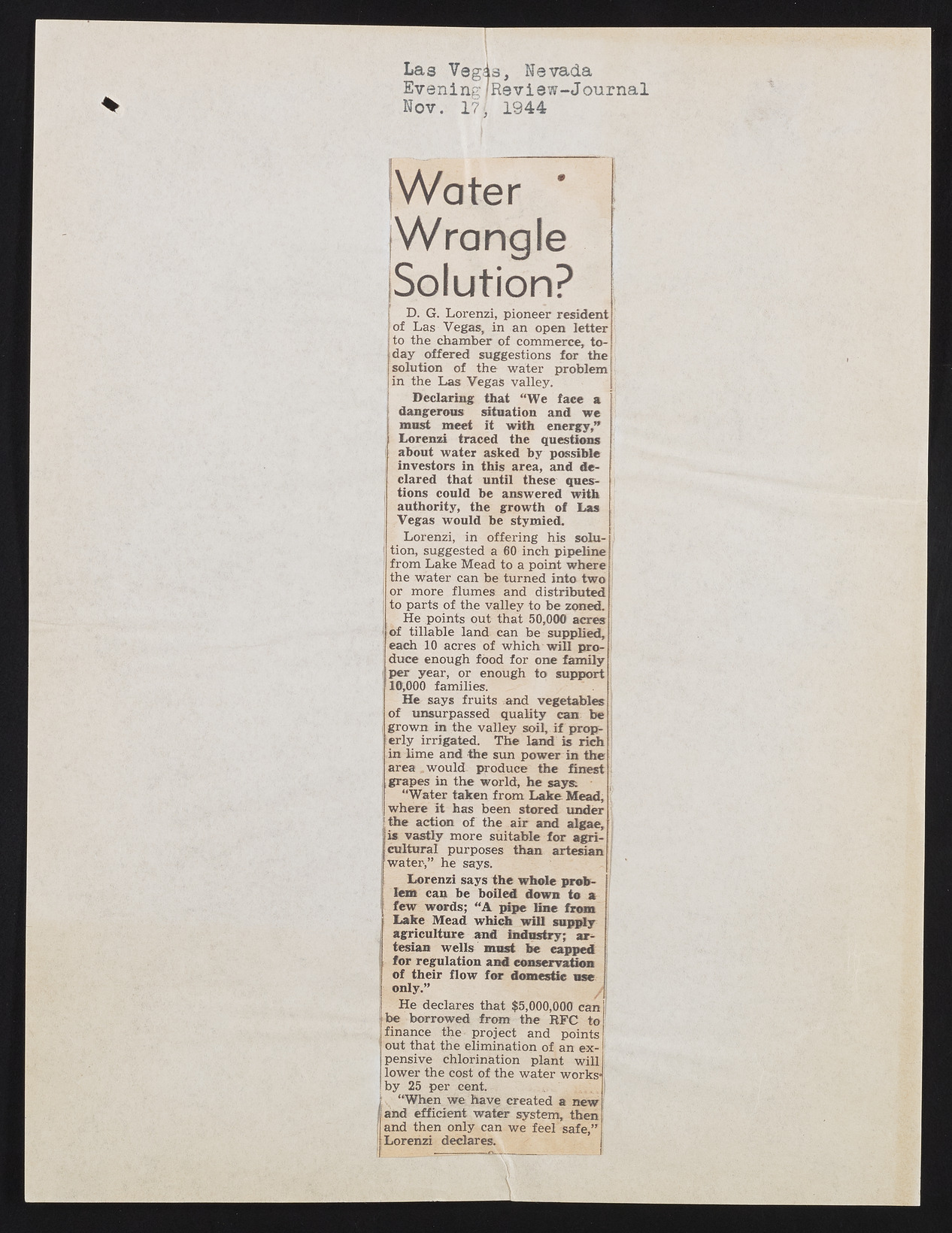Copyright & Fair-use Agreement
UNLV Special Collections provides copies of materials to facilitate private study, scholarship, or research. Material not in the public domain may be used according to fair use of copyrighted materials as defined by copyright law. Please cite us.
Please note that UNLV may not own the copyright to these materials and cannot provide permission to publish or distribute materials when UNLV is not the copyright holder. The user is solely responsible for determining the copyright status of materials and obtaining permission to use material from the copyright holder and for determining whether any permissions relating to any other rights are necessary for the intended use, and for obtaining all required permissions beyond that allowed by fair use.
Read more about our reproduction and use policy.
I agree.Information
Digital ID
Permalink
Details
More Info
Rights
Digital Provenance
Publisher
Transcription
Las VegAs, Nevada Evening/Review-Journal Nov. 1ft 1944 IWater Wrangle Solution? D. G. Lorenzi, pioneer resident of Las Vegas, in an open letter to the chamber of commerce, today offered suggestions for the solution of the water problem in the Las Vegas valley. Declaring that “W e faee a dangerous situation and w e must meet it with energy,” j Lorenzi traced the questions about water asked by possible j investors in this area, and de- I dared that until these' ques- | tions could be answered with | authority, the growth of Las j Vegas would be stymied. Lorenzi, in offering his solu- I tion, suggested a 60 inch pipeline 1 from Lake Mead to a point where j the water can be turned into two i or more flumes and distributed j to parts of the valley to be zoned. He points out that 50,000 acres I of tillable land can be supplied, each 10 acres of which w ill produce enough food for one family < per year, or enough to support ! 10,000 families. He says fruits and vegetables I of unsurpassed quality can be I grown in the valley soil. if properly irrigated. The land is rich in lime and the sun power in the area .would produce the finest j grapes in the world, he says “Water taken from L ak e Mead, ! where it has been stored under ? the action o f the air and algae, is vastly more suitable for agricultural purposes than artesian j water,” he says. Lorenzi says the whole problem can be boiled down to a few words; " A pipe line front Lake Mead which w ill supply agriculture and industry; artesian wells must be capped for regulation and conservation of their flow for domestic use j He declares that $5,000,000 can | be borrowed from the RFC to j finance the project and points ! out that the elimination of an expensive chlorination plant will lower the cost of the water works* I by 25 per cent. j “When w e have created a new and efficient water system, then and then only can we feel safe,” Lorenzi declares. only.” /

